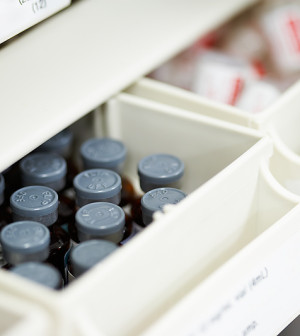- Navigating Your Midlife Crisis: Embracing New Possibilities
- City Raccoons Showing Signs of Domestication
- Mapping the Exposome: Science Broadens Focus to Environmental Disease Triggers
- One Week Less on Social Media Linked to Better Mental Health
- Your Brain Changes in Stages as You Age, Study Finds
- Some Suicide Victims Show No Typical Warning Signs, Study Finds
- ByHeart Formula Faces Lawsuits After Babies Sickened With Botulism
- Switch to Vegan Diet Could Cut Your Greenhouse Gas Emissions in Half
- Regular Bedtime Does Wonders for Blood Pressure
- Dining Alone Could Mean Worse Nutrition for Seniors
New CPR Devices Approved


A pair of new CPR devices designed to help save people whose hearts stop beating has been approved by the U.S. Food and Drug Administration.
The ResQCPR System involves two devices used together to help people who require CPR outside the hospital. Some 300,000 Americans each year require out-of-hospital CPR, the FDA said Monday in a news release.
“Most people who suffer cardiac arrest outside of a hospital die,” said Dr. William Maisel, acting director of the Office of Device Evaluation in the FDA’s Center for Devices and Radiological Health. “The ResQCPR System may increase oxygenated blood circulation during CPR,” which may boost the chances of survival for those patients.
The first device, the ResQPump Active Compression Decompression CPR Device, attaches to a person’s chest with a suction cup, making it easier for a rescuer to perform compressions and decompressions, the FDA said.
The second unit, the ResQPod 16.0 Impedance Threshold Device, fits onto a rescue mask or breathing tube, and helps reduce pressure inside the patient’s chest. This procedure, known as preloading, helps draw more blood to the heart.
Used together, the devices help increase the amount of oxygenated blood that circulates through the patient’s body during CPR, the FDA said.
Side effects observed during clinical testing were similar to those of standard CPR, the agency said. In addition, people using the new devices had a higher risk of fluid in the lungs (pulmonary edema) than people who received standard CPR.
The devices are made by Advance Circulatory Systems, based in Roseville, Minn.
More information
Visit the U.S. Food and Drug Administration to learn more.
Source: HealthDay
Copyright © 2025 HealthDay. All rights reserved.










